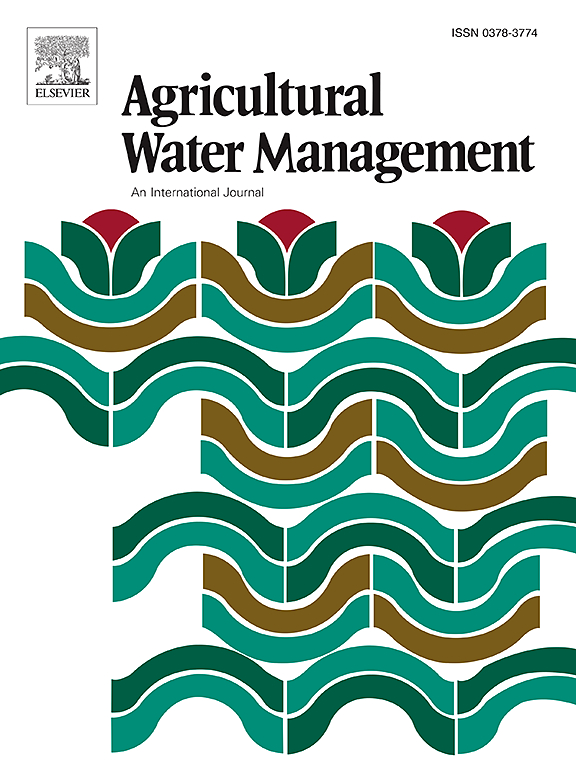旱涝交替胁迫下 C/N 代谢与水稻生长相关指标之间的关系
IF 5.9
1区 农林科学
Q1 AGRONOMY
引用次数: 0
摘要
气候变化导致干旱和洪涝事件日益频繁,使水稻在不同生长阶段面临更强的旱涝交替胁迫。为阐明旱涝交替胁迫对水稻生长及碳氮代谢的影响,建立了五种灌溉制度:除成熟期(CK)外,其他生长阶段均采用浅水(0-5 cm)频繁灌溉。结果表明,T-HD 和 T-LD 处理的分蘖数、叶片中 K+ 浓度和地上生物量显著低于 CK、J-HD 和 J-LD。与 CK 相比,T-LD 提高了水稻叶片的叶绿素含量和硝酸还原酶活性(NRA),从而提高了光合速率(Pn)并改善了δ13C 值。CK、T-HD 和 T-LD 处理下的δ15N 值明显高于 J-HD 和 J-LD 处理下的δ15N 值(p<0.05)。此外,在拔节期,NRA 与叶片氮浓度呈明显的正相关。路径分析表明,δ13C、叶片含水量、分蘖数、叶面积、K⁺浓度和氮浓度与地上部生物量直接相关,而光合参数则通过氮代谢相关指标间接影响生物量。这一结果为田间排灌措施的安排提供了理论支持。本文章由计算机程序翻译,如有差异,请以英文原文为准。
Relationships between C/N metabolism and rice growth related indicators under alternating drought and flooding stress
The increasing frequency of drought and flooding events due to climate change exposes rice to intensified alternating drought and flooding stress during different growth stages. To elucidate the impacts of alternating drought and flooding stress on rice growth and carbon (C) and nitrogen (N) metabolism, five irrigation regimes were established: alternating cycle of light drought-flooding-light drought during the tillering stage (T-LD), heavy drought-flooding-heavy drought during the tillering stage (T-HD), light drought-flooding-light drought during the jointing stage (J-LD), heavy drought-flooding-heavy drought during the jointing stage (J-HD), and frequent irrigation with shallow water depth (0–5 cm) for growth stages except for the maturation stage (CK). The results indicated that the tiller numbers, K+ concentrations in leaves, and above-ground biomass subjected to T-HD and T-LD treatments were significantly lower than in CK, J-HD and J-LD. Compared to CK, T-LD enhanced chlorophyll content and nitrate reductase activity (NRA) in rice leaves, leading to elevated photosynthetic rates (Pn) and improved δ13C values. The δ15N values under the CK, T-HD, and T-LD treatments were significantly greater than those under the J-HD and J-LD treatments (p<0.05). Additionally, NRA showed a significant positive correlation with leaf N concentration during the jointing stage. Path analysis indicates that δ13C, leaf water content, tiller number, leaf area, K⁺ concentration, and N concentration were directly related to above-ground biomass, whereas photosynthetic parameters indirectly affected biomass through N-metabolism related indicators. This result offers a theoretical support for the scheduling of irrigation and drainage practices in the field.
求助全文
通过发布文献求助,成功后即可免费获取论文全文。
去求助
来源期刊

Agricultural Water Management
农林科学-农艺学
CiteScore
12.10
自引率
14.90%
发文量
648
审稿时长
4.9 months
期刊介绍:
Agricultural Water Management publishes papers of international significance relating to the science, economics, and policy of agricultural water management. In all cases, manuscripts must address implications and provide insight regarding agricultural water management.
 求助内容:
求助内容: 应助结果提醒方式:
应助结果提醒方式:


